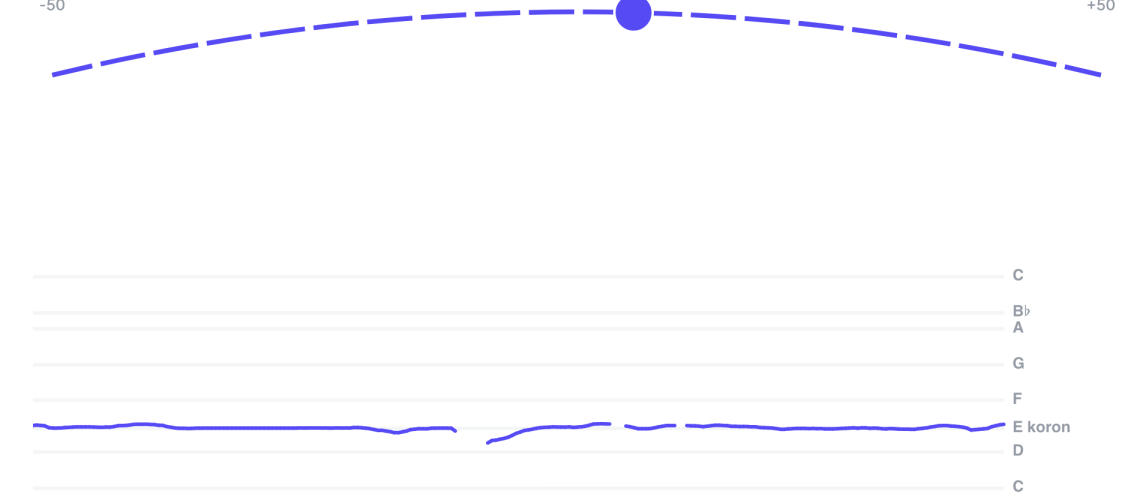Ableton Live 12 will ship with new integrated tuning support — but there’s more. An interactive website will explore the context and musical traditions behind some of those tunings, along with interactive tools for working with tuning and modes. Here’s a preview.
I got to sit down with Dennis DeSantis at Ableton for a preview of the new site. You may know Dennis from his book for Ableton, Making Music: A Book of Creative Strategies. And if this idea sounds related to Ableton’s Learning Music site, that’s no coincidence; the tuning site shares some of the same look and feel and Web team.

Learning about tuning
Ableton’s tuning site is in active development leading up to the final release of Live 12, but it’s already impressive – and access will roll out soon, alongside the Live public beta. There are several components:
- Expert background information on tunings for select tuning traditions.
- A sequencer for playing melodies in a tuning, with sound preview (similar to Live’s Clip Detail view, but in-browser).
- An interactive tuner with tuning labels and visualizations, supporting mic input (so you can sing or play into your browser).
- A live code editor that lets you edit tuning files and export to Ableton Live 12 or as a standard Scala file for other software and hardware.
All of these pieces work together, too. Edits you make to the code editor are immediately reflected in the tuner, visualization, and sonification. It means the site doubles as a useful Scala editor – and as with Scala, that means you can key in tunings as Hz or as ratios.
Since the site isn’t public, Dennis takes us through a brief visual tour of how it works. We see some of the explanatory text, with links to the included glossary and definitions as you hover over text. We see an embedded widget with the sequencer, a set of playable pads connected to the tuner, and the code editor.
You can export a Live Set to open in Live 12, with both the sequencer contents and tuning in place. You can also export tuning files that you can drop directly into Live 12’s new tuning pane. (Live uses the extended .ascl extension, whereas Scala uses .scl. The Code Editor can export either one, but the files are mostly identical – .ascl included some metadata encoded as comments, as is visible in the video.)
Each tuning in Live 12 will have corresponding pages with background information, whether it’s from an Egyptian Umm Kulthum recording or a custom tuning developer by Wendy Carlos. There are around 90 tunings in the current beta, though that number is likely to change before release.
Live 12 beta users will have access to the site as it’s developed, with access for everyone – Ableton Live owner or not – once Live 12 drops.
I’m as excited about the people involved in providing tunings and context as I am about the functionality. Ableton has worked with freelancers with expertise in playing and teaching others. Iranian composer and performer Idin Samimi Mofakham worked on Persian tuning. My friend Sami Abu Shumays of maqamlessons.com and Inside Arabic Music fame took on maqams. Ukrainian-descended Canadian composer and microtonality guru Marc Sabat contributed. And yes, here’s where you might want to get in touch with Ableton if you’re an expert on tuning and musical tradition (seriously).
The Code editor:

Interactive tuner and visualizations:

Live 12 features
It’s worth also recapping how Ableton Live 12’s new tuning features work. Select a Tuning System from the provided set – or import your own Scala file – and drag it as the active Tuning. The full Live set and all Ableton Devices and any MPE-compatible instruments will play pitch patterns according to the current tuning. (Currently, Scale and Key are disabled when there’s an active tuning, since they’re no longer relevant – even the dropdowns at the top disappear. To bring them back, you would delete the active tuning.)
You start with tuning selections, listed as .ascl files with names (any comments will appear, too, inside Live):

Then select the active Tuning System, where you can adjust details:

Live’s tuning support includes not just the pitch degree values, but also octave, degree, and reference pitch/frequency with lowest note and highest note information. Now, anyone really deep into tuning will know that this scratches the surface of tuning and intonation, but if that does get you thinking, good! I hope we have more discussions about new ways of implementing tuning in electronic and digital systems!
A couple of other notes you may have missed:
You can choose to ignore the active Tuning System per MIDI track, by selecting Bypass Tuning:

You can also enable or disable the Options > Retune Set on Loading Tuning Systems menu item. If enabled, this will go through all your existing MIDI Clips and retune them to the new system when selected, which is actually really cool.
It’s also worth noting that Live 12 will modify the Piano Roll display and indicate the pitch names in the Tuning System. (And it will cease to look like a piano, which makes no sense in most of these systems.)
Tuning isn’t just “pitches between other pitches,” like color values: all tunings have meanings and relationships to one another.
Context matters
The truth is, you never run out of stuff to explore in the tuning world – like any other fundamental element of music. And giving some context to tunings is a much-needed step. Tuning isn’t just “pitches between other pitches,” like color values: all tunings have meanings and relationships to one another. They have a history, traditions, and cultural practices, and constantly take on new compositional and experimental forms. They live in musicianship. And they change and grow – even the mental models of tunings themselves, before even getting to the nuances of intonation.
It’s worth re-reading Khyam Allami’s interview for CDM, and his critique of music tech’s conventional approach. A case in point is Scala itself: it’s a great, free tool, but its default download gives you a huge dump of files with little to no explanation of what these raw tunings represent or how they’d be used.
No one website can ever hope to be comprehensive about a single practice, let alone the full diversity of music on Earth. But that means it’s even more important just to get started, and hopefully, this is a sign of more of this kind of use of the Internet. Live 12’s tools and even this new website make the Isartum online toolset Khyam worked on even more useful and relevant. You can use Isartum to play Live 12 as other versions, and it’s possible to import/export Scala files in both tools.
So what’s exciting about having this website alongside what Ableton is doing in software is, that it’s engaging new communities – and it’s a chance for all of us to learn more about tuning.
If this gets everyone digging into Umm Kulthum and discussing tunings and arguing about how they should be represented and making competing measurements and inventing your own tuning systems and customizing tunings for how you play and making custom Max for Live devices for intonation and going and building entirely new tools and instruments … well, that sounds ideal to me.
Let us know what you think.
For more:




